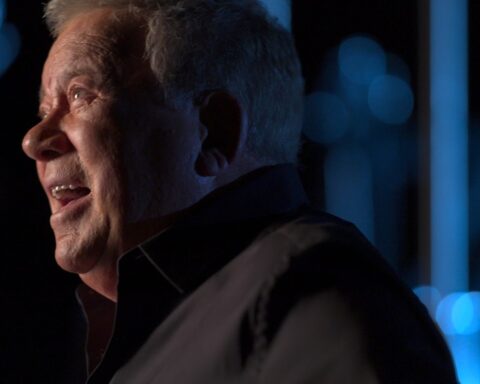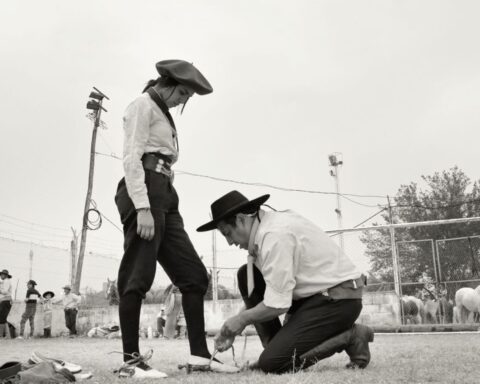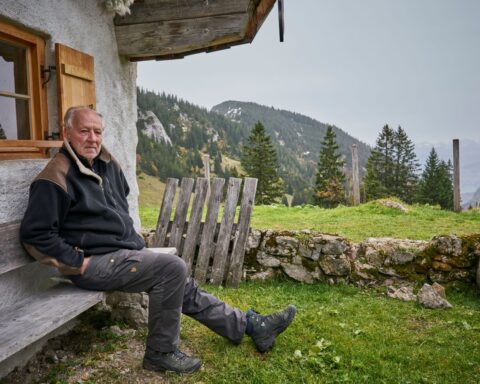Andrey Tarkovsky. A Cinema Prayer
(Italy/Russia/Sweden, 97 min.)
Dir. Andrey A. Tarkovsky
Back in the day, I thought that seeing the latest Andrey Tarkovsky film was obligatory. What other filmmaker got so deeply in touch with nature, the human soul, the ineffable? Stalker wasn’t merely about some psychic or mystical or purgatorial zone, the movie seemed to actually land you in it.
On top of that, Tarkovsky went head-to-head with Soviet agency bureaucrats. His second feature, Andrei Rublev, (contemporaneous with Fellini’s 8½) impressed viewers, but was held back for five years. For Soviet culture bosses, Tarkovsky was “ahistorical,” anti-Russian, too individualistic and too Western. When his picture Nostalghia played Cannes, it was undermined by a special operative: pro-Soviet director Sergei (War and Peace) Bondarchuk.
When Tarkovsky’s last film, 1982’s The Sacrifice, loomed into view, the reaction of a friend to the opening scene infuriated me. As Erland Josepson struggled to plant a tree in a longshot that seemed to never end, my friend was aghast. “What the fuck is it with these Swedish movies?”
In fact, Tarkovsky, at this point in exile from his native Russia, did shoot the picture in a typically austere, Bergmanesque Swedish landscape with the Swedish auteur’s cinematographer, Sven Nykvist. But my friend, who grew up in rough and tumble midtown Manhattan, was not referring to locale. “Swedish” meant glacial pacing, endless soul-searching monologues, Erland Josephson pushing and pulling on a scraggly tree in wan light while telling a parable about a monk. “Oh look,” shouted the New Yorker after four or five minutes. “A guy on a bicycle. Action!”
As is crystal clear in Andrey Tarkovsky. A Cinema Prayer, a loving tribute by the late filmmaker’s son, Tarkovsky created uncannily luminous, pastoral images, not to mention scenes that had a haunting metaphysical buzz. But like Hungarian director Béla Tarr, he had no compunctions about slowing things down to a soporific snail’s pace.
In its approach, A Cinema Prayer resembles the Marlon Brando doc Listen to Me Marlon. The younger Tarkovsky avoids talking head experts, friends, and family in his documentary. His father, who would be 87 if he hadn’t died prematurely, beams in directly via the many audio and filmed interviews he conducted. We hear his voice throughout the entire doc over photos of his real life, particularly from childhood, merging with scenes from Stalker, Andrei Rublev, The Mirror, Solaris, and The Sacrifice. We see him directing scenes, engaging actors with hypnotic intensity and, by contrast, repairing the roof of his beloved country house, gazing heavenward.
Structured with chapter titles like Childhood and Youth and Leaving Russia, the doc reveals little about Tarkovsky’s private life and relationships with the exception of the poet father he worshipped, and his mother. We do learn about his beloved childhood garden, how his father took off but then returned to demand custody of young Andrei, his mother’s getting the boy through art and music school during wartime, and the “Khrushchev Thaw” of the late Fifties and early Sixties that gave him the freedom to launch himself as an artist.
Otherwise, we hear Tarkovsky philosophizing, analyzing, rhapsodizing. Always looking dapper but never cracking a smile or showing a hint of irony, he talks about art and religion: how they are interchangeable and dependent on each other. Tarkovsky believed that without art, human beings are lost, and “the meaning of art is prayer.” Moreover, he felt that every artist fulfills the most vital of human activities: service.
A romantic who appreciated the natural world, Tarkovsky decried that we have “cut nature out of film.” He meant that movies relentlessly emphasize human activity, diminishing the far greater and more sublime properties of nature.
Tarkovsky’s passionate ideas are inspiring, but as the film progresses, there’s an overload of declamatory, even self-important sermonizing. He becomes too sanctified, like the religious icons he admired. It would have been nice to see more of him interacting on a basic human level, as well as directing. How did he get actors beyond what he called “traditional dramaturgy”? How did he capture nature’s beauty the way he did? Why did he consider Stalker his greatest achievement?
Visit the POV RIDM Hub for more coverage from this year’s festival!











